My Teeth are Decaying at the Gum Line: What You Need to Know
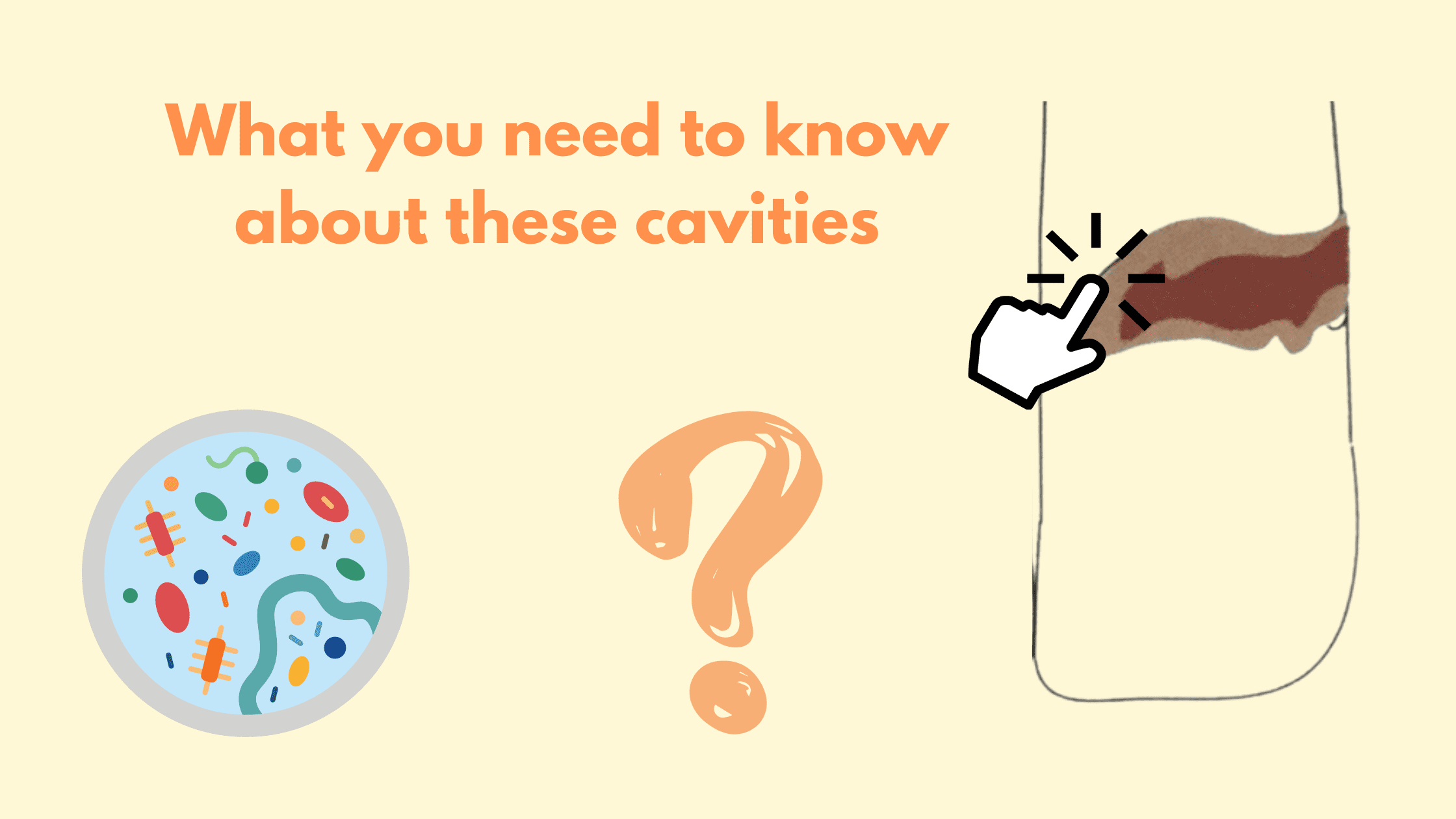
Tooth decay at the gum line is relatively uncommon but becomes more prevalent among the elderly. Due to its rapid and aggressive nature, timely treatment is crucial.
If your teeth are decaying at the gum line, you've come to the right place. This article will provide everything you need to know about these pesky lesions.
If your teeth are decaying at the gum line, you've come to the right place. This article will provide everything you need to know about these pesky lesions.
In this article:
1. Tooth Decay at the Gum Line: What's so Particular About it?
2. What Are the Risk Factors?
3. Symptoms of Gumline Cavities
4. How Does Tooth Decay at the Gum Line Manifest in X-rays?
5. How Can Gumline Tooth Decay Evolve if Left Untreated?
6. How to Stop Tooth Decay at the Gum Line?
7. Professional Treatment Options for Gumline Tooth Decay
Tooth Decay at the Gum Line: What's so Particular About it?
Despite advancements in oral hygiene tools and increased awareness of the importance of a healthy mouth, tooth decay remains the most common chronic disease affecting both children and adults. Approximately 1 in 4 adults aged 20 to 64 has at least one cavity (1-2).The usual locations are the chewing surfaces and spaces between teeth due to their tendency to retain more plaque and food debris.
On the other hand, tooth decay at the gum line is less common but becomes more frequent with age, peaking at 70. To understand the characteristics of gumline cavities, it's essential to explore the root cause.
The Root Cause of Cavities
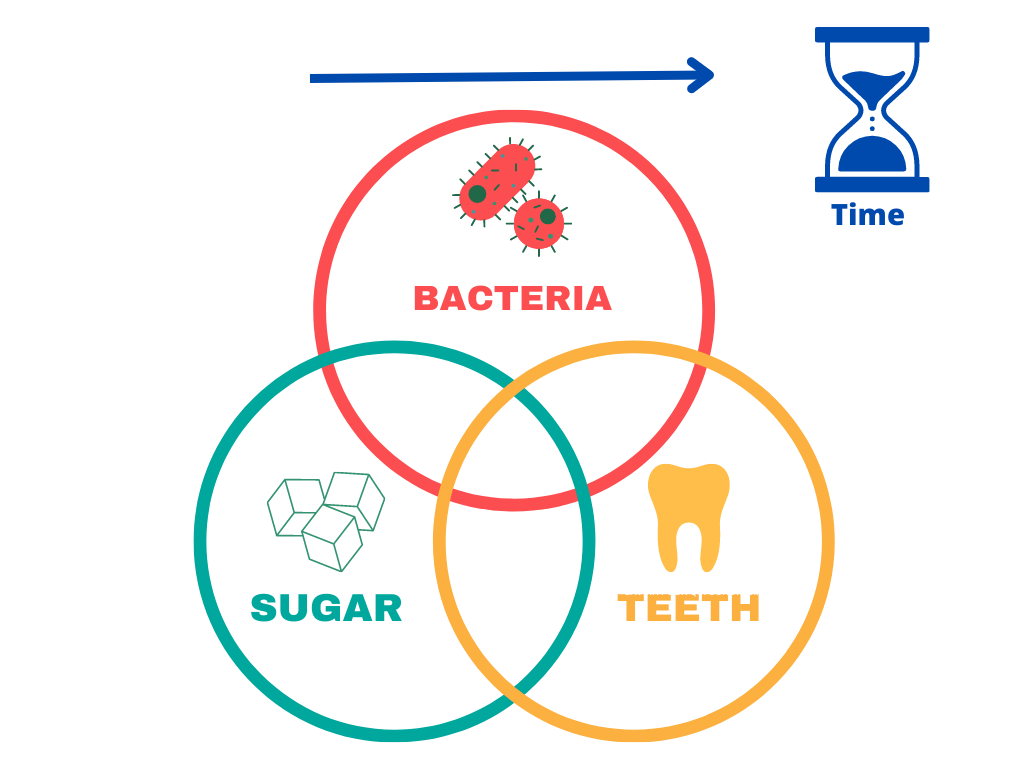
Cavities, regardless of their location, follow a similar process. Bacteria in the mouth form a sticky film called plaque. Fueled by sugars from the diet, bacteria release acids that dissolve tooth minerals. This process, known as demineralization, creates superficial lesions (white spots) that eventually progress to form holes or cavities.
Different Situations of Gumline Cavities
Tooth decay at the gum line can present in three distinct situations based on the location of damage with regard to the gum:
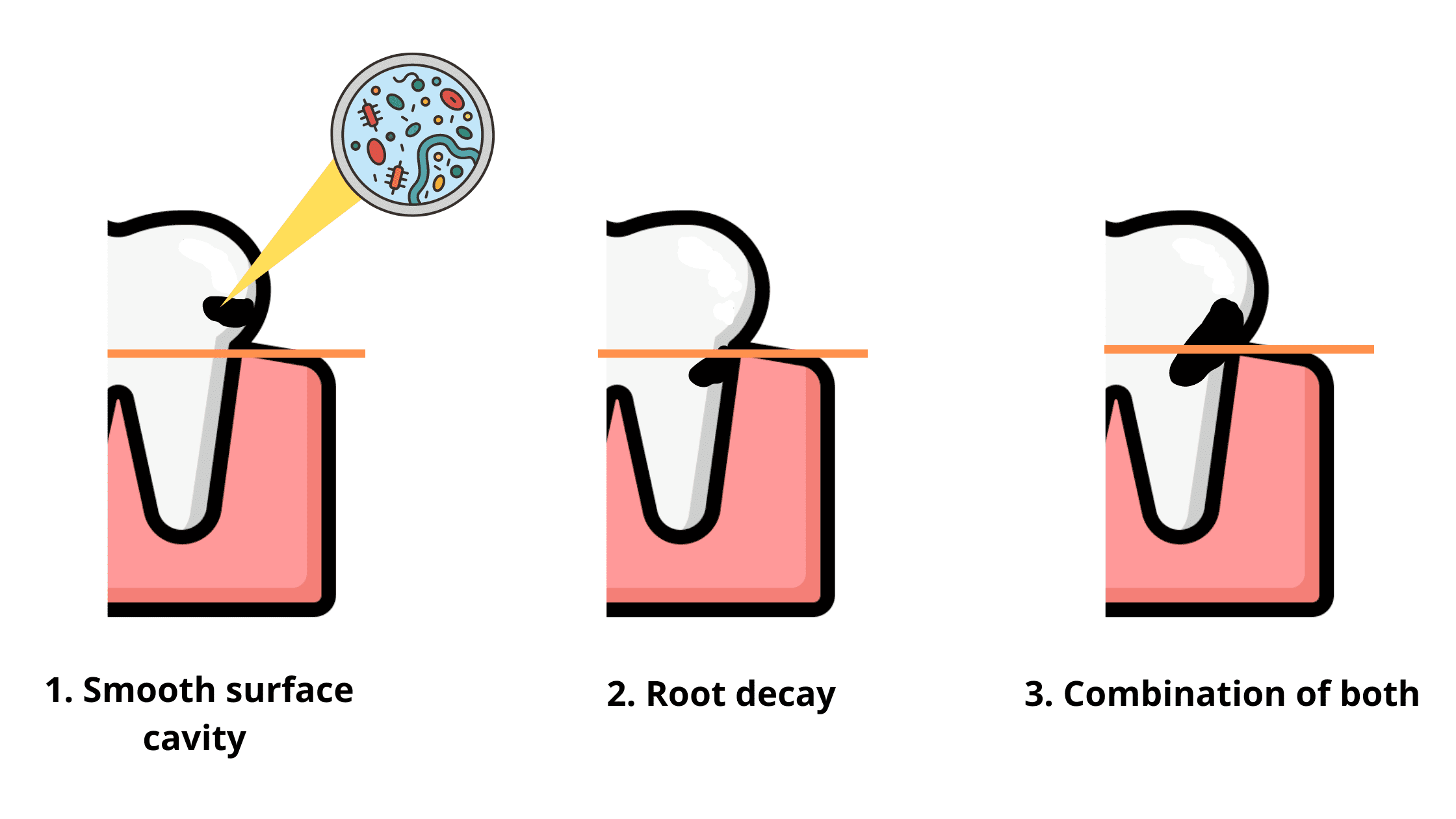
- Smooth-Surface Caries: The damage is above the gum line. Only the enamel and dentin layers are involved. These are accessible and easier to treat.
- Root Caries: Extending beyond the gum line, these involve the cementum and dentin layers. The deep-seated nature of the damage can make treatment challenging.
- Combined Damage: Extending both above and below the gum line, affecting enamel, dentin, and cementum.
Older Adults are more Vulnerable to Gumline Cavities
While anyone can develop gumline cavities, older individuals are more prone. Why? Receding gums are the main culprit.
Over the years, gums become more susceptible to recession due to the gradual accumulation of risk factors like plaque and tartar. Additionally, persistent aggressive brushing or using a hard toothbrush can cause irreversible harm to gums, further contributing to recession.
But don't take it wrong—age doesn't always mean gum disease. If you practice good hygiene and gently treat your gums, it's unlikely that you'll suffer any recessions.
The Link Between Receding Gums and Tooth Decay at the Gum Line
When gums pull away from the teeth, the roots become exposed to the acidic mouth environment. Unlike the crown, which is protected by enamel, the hardest tissue in the body, the roots are covered by a thinner, softer tissue called cementum. Once exposed, the cementum deteriorates rapidly, revealing the underlying dentin layer.
When bacteria and plaque reach this vulnerable dentin layer, decay sets in and advances twice as fast as on enamel.
Consequently, gumline cavities, particularly root caries, are fast-growing conditions requiring prompt treatment to prevent additional damage.
What Are the Risk Factors?
We have discussed gingival recession as a primary contributor to tooth decay at the gum line. But it's important to know that tooth decay is a complex problem influenced by multiple factors rather than a single one. The more of these factors you have, the greater your risk of developing cavities.1. How Good Is Your Oral Hygiene?
As highlighted, plaque is the primary culprit behind cavities. It's a soft, whitish film that provides a thriving network for bacteria. This biofilm constantly builds up on teeth, even after thorough cleaning.
So, oral hygiene aims to control its amount rather than eradicate it for good. This control prevents the transformation of plaque into hardened tartar, a more challenging substance to remove.
Inconsistent oral care, such as inadequate brushing or skipping flossing, allows plaque to accumulate, leading to various issues like cavities, gum disease, bad breath, infections, and other complications.
Moreover, other factors beyond oral hygiene increase plaque build-up. Conditions like misaligned teeth or wearing braces can increase the adherence of bacteria and food remnants to the teeth, heightening the risk of developing cavities.
2. Do You Brush Your Teeth Too Aggressively or Use a Hard Toothbrush?
Wondering how the brushing technique relates to gumline cavities? It's a significant factor in tooth decay at this specific location.
Our gums are soft and can adapt to external stress. For instance, aggressive brushing or using a hard bristle toothbrush over time can harm and cause them to shrink. As the roots are exposed, they are more likely to get cavities.
Brushing with too much pressure can also contribute to tooth wear, a type of injury near the gum line called abrasion. Similar to cavities, but without bacterial involvement.
Hence, it is advisable to opt for a soft toothbrush and a gentle brushing technique, keeping a 45-degree angle with the gum line. This way, you not only clean your teeth and stimulate your gums but also do so without causing undue wear.
3. A Sugar-Rich Diet
Sugar fuels cavity-causing bacteria. If you eat a lot of carbs, lack essential minerals, and snack often between meals, you're constantly feeding these harmful bacteria, making your mouth more acidic.
This weakens the minerals in your teeth, causing issues like erosion, sensitivity, and cavities. So, watching your diet and snacking habits is essential for keeping your teeth healthy.
4. Lack of Saliva or Dry Mouth
Let's start by talking about the vital role of saliva. Think of it as your mouth's natural cleaner.
Saliva plays a crucial role in eliminating bacteria, preventing their buildup, and clearing food debris from your teeth. It serves as a protective shield, balancing acidity in your mouth and protecting against demineralization.
Saliva also carries essential minerals, like calcium and phosphorus, that help replenish teeth between meals. After an acidic or sweet meal, saliva steps in to provide the lost minerals through a process called remineralization. This keeps a healthy balance between demineralization and remineralization, preventing the initiation of cavities.
So, if you snack frequently between meals, you're preventing saliva from doing its job during this period.
Factors like aging and certain medications can also impact saliva production and function, significantly increasing the risk of developing cavities.
5. Aged and Ill-Fitting Dental Work
Braces, improperly shaped fillings, aged dental crowns that no longer fit, or partial dentures can all contribute to plaque accumulation at the gum line, paving the way for cavity formation.
If you have any dental restorations, it is crucial to schedule regular check-ups to monitor your teeth health. Timely treatments, such as professional cleaning, polishing and early treatment of cavities, are essential for optimal long-term oral health.
Symptoms of Gumline Cavities
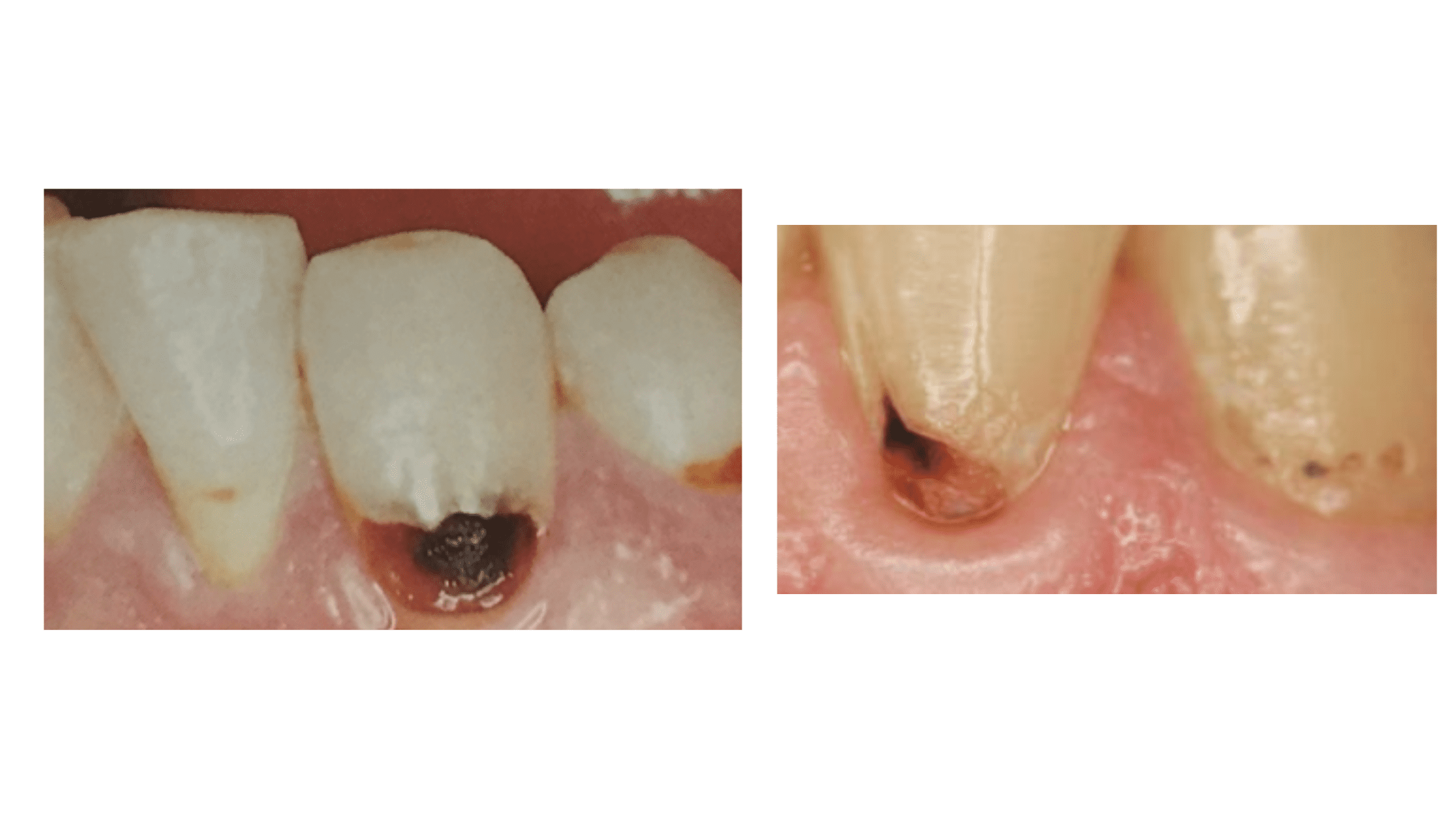 Tooth decay in its early stages, when it's still on the enamel surface, can be challenging to spot. Initially, it appears as a light white color with a slightly chalky texture. As the decay advances, it becomes more noticeable and darker in color. These are the signs to look out for:
Tooth decay in its early stages, when it's still on the enamel surface, can be challenging to spot. Initially, it appears as a light white color with a slightly chalky texture. As the decay advances, it becomes more noticeable and darker in color. These are the signs to look out for:
- Dark Discoloration: As the cavity progresses, it becomes darker in color, indicating a deeper progression of the damage.
- Sensitivity to Hot or Cold: Tooth sensitivity to temperature changes, especially hot or cold substances, can be a sign of cavities. It indicates the exposure of the inner tooth layers, exposing the nerves to external stimuli.
- More Plaque Buildup: Damaged areas due to decay become rough, trapping more plaque. Increased plaque buildup can lead to further decay and contribute to the progression of cavities.
- The Tooth Looks Duller in the Light: As teeth lose minerals due to decay, their natural shine fades, making them appear duller in the light.
- Visible Holes on the Tooth: Advanced stages of cavities may manifest as visible holes on the tooth's surface. At this stage, the damage is irreversible, requiring prompt dental treatment.
How Does Tooth Decay at the Gum Line Show up on X-rays?
X-rays help determine the depth and site of decay. Cavities near the gum line appear as a distinct dark halo around the affected part of the tooth.However, in some cases, particularly where decay is progressing on the front or back of the tooth, this visual cue is not always apparent on X-rays. In such cases, diagnosis relies on thorough inspection and examination using a dental probe.
The image below shows a dark halo and cavity around the gum line on a tooth with an old, ill-fitting crown.
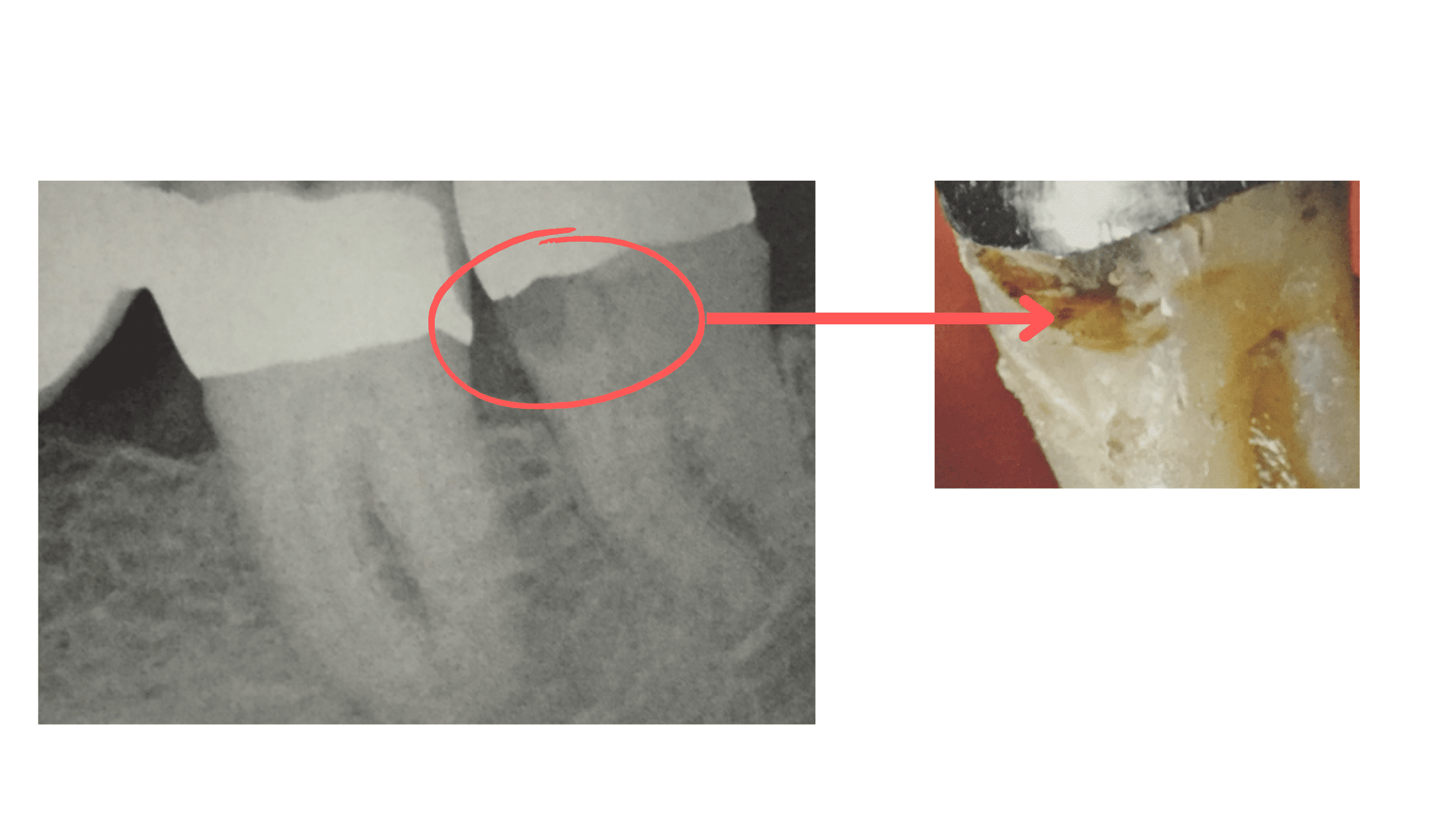
How Can Gumline Tooth Decay Evolve if Left Untreated?
Tooth decay at the gum line level can evolve rapidly if left untreated.Think of it like chopping down a tree with an axe. The decay can progress deeper and along the gum line, leading to more destruction of the tooth structure.
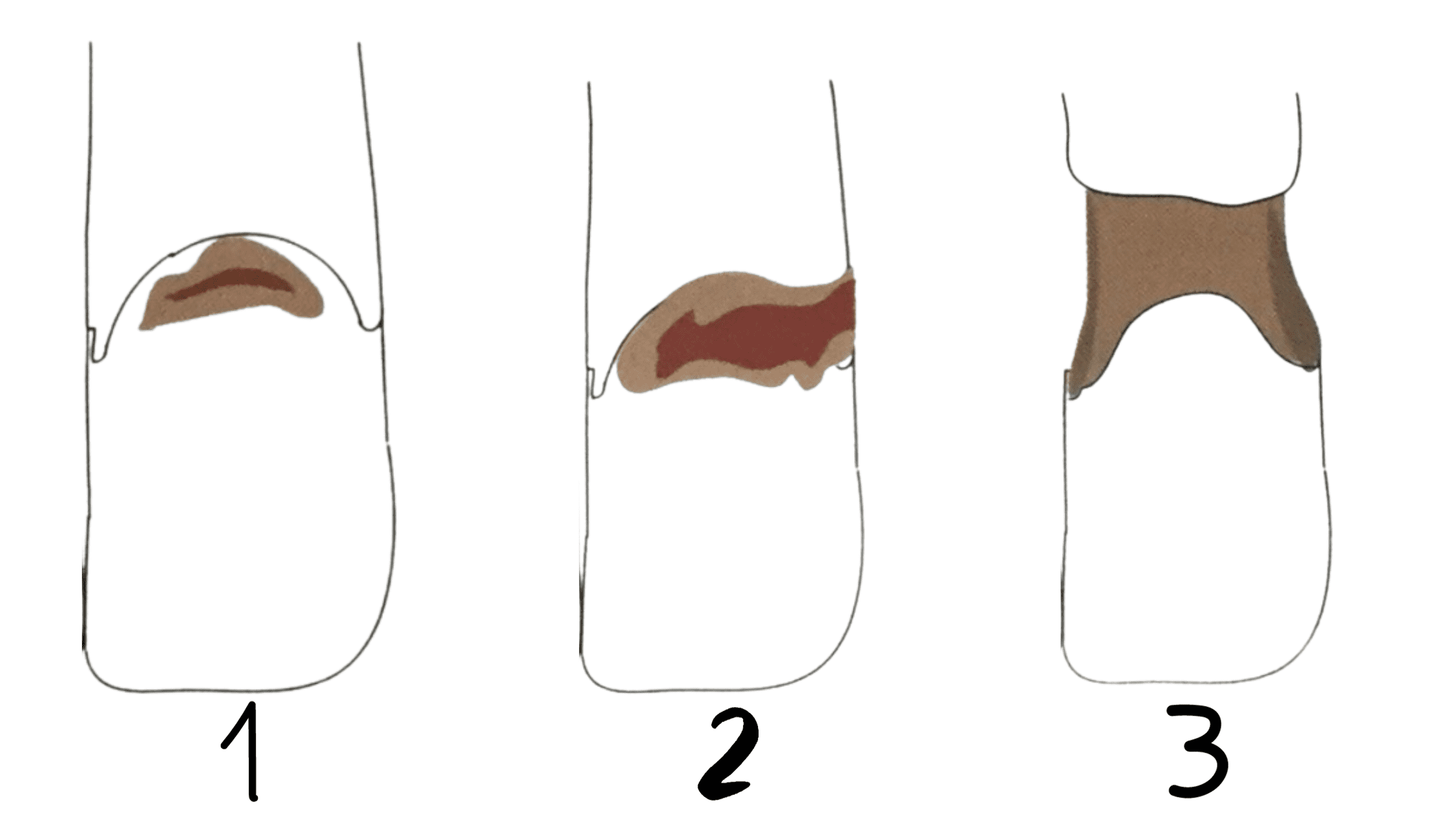
At an advanced stage, the tooth's foundation is weakened and compromised. It then risks fracturing or even falling out, as it can no longer hold on properly.
Here are the main stages of tooth decay:
- The decay initiates as a small superficial spot without visible holes or cavities.
- As it advances, the tooth loses more minerals, resulting in a noticeable hole or cavity.
- When left untreated, the decay can reach the tooth's nerve, leading to potential complications such as infection or a dental abscess.
How to Stop Tooth Decay at the Gum Line?
When it comes to your oral health, you need to be alert to any changes in your mouth. Detecting tooth decay in its initial stage, before it forms a hole, is an opportunity to halt or even reverse the damage. Here are some tips to consider:- Perfecting Oral Hygiene: Brush your teeth twice a day with a soft toothbrush and the right technique, and don't skip flossing. This will help prevent plaque buildup, the main culprit behind cavities and gum disease.
- Support the Role of Saliva: Promote the role of your saliva by not snacking between meals. Instead, stay hydrated and incorporate sugar-free gum or candies to stimulate saliva production.
- Include Remineralizing Treatments: Many remineralizing products based on minerals such as fluoride, calcium, and phosphorus are available in mouthwashes, dental gels, dental foams, and toothpastes. You can choose an option and include it in your hygiene routine to help rebuild and strengthen your teeth.
- Reduce Sugary Foods and Snacking: Limit the consumption of sugary foods and snacks to mitigate the growth of cavity-causing bacteria and reduce acid production.
- Drink Plenty of Water: Stay hydrated by drinking plenty of water throughout the day, which helps flush away food particles and bacteria and fight dry mouth.
However, if the decay has progressed and formed a hole, the damage becomes irreversible. Seeking professional treatment from a dentist becomes the only solution. This involves removing decayed tissue and restoring the tooth.
After treatment, the journey is not over. It's crucial to continue your dental care at home and make regular visits to your dentist to prevent new cavities or the reappearance of previous ones.
Professional Treatment Options for Gumline Tooth Decay
After a thorough examination and x-rays to assess the extent of the damage, your dentist may recommend one of three options:1. Do Nothing and Monitor:
This option is valid only if the decay has stopped or is not progressing and doesn't cause you any cosmetic concerns. In such cases, your dentist might advise monitoring the situation. Preventive treatments like professional cleaning, fluoride applications, and remineralizing treatments may be considered.
2. Removing Decay and Restoring:
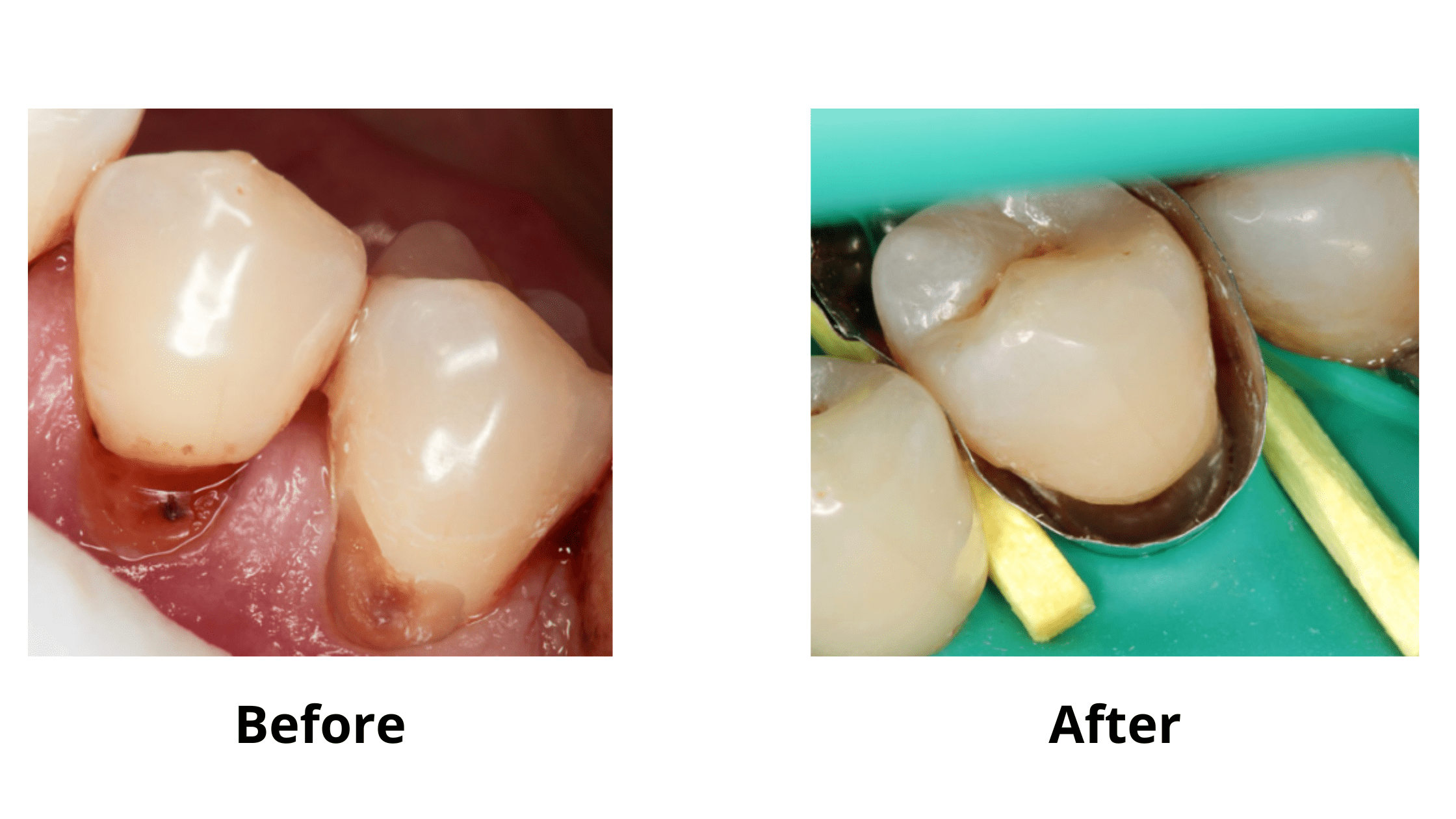
If the lesion is active and advancing, your dentist will opt for removing the decay and restoring the tooth. This can involve a filling or crown, depending on the severity of the damage.
3. Extraction:
In extreme cases where the tooth is severely damaged and cannot support proper restoration, extraction may be considered. For deep root cavities below the gum line, a technique called crown lengthening may be required first. This involves lowering the gum level (gingivectomy) and, in some cases, adjusting the surrounding bone to reach the cavity and repair the tooth properly.
